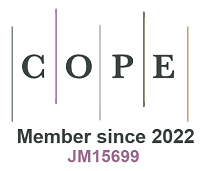REFERENCES
1. Wei, Y.; Chen, K.; Kang, J.; Chen, W.; Wang, X.; Zhang, X. Policy and management of carbon peaking and carbon neutrality: a literature review. Engineering 2022, 14, 52-63.
2. Deng, D.; Wu, J.; Feng, Q.; et al. Highly reversible zinc-air batteries at -40 °C enabled by anion-mediated biomimetic fat. Adv. Funct. Mater. 2024, 34, 2308762.
3. Zheng, H.; Deng, D.; Zheng, X.; et al. Highly reversible Zn-air batteries enabled by tuned valence electron and steric hindrance on atomic Fe-N4-C sites. Nano. Lett. 2024, 24, 4672-81.
4. Yang, Q.; Jiang, Y.; Zhuo, H.; Mitchell, E. M.; Yu, Q. Recent progress of metal single-atom catalysts for energy applications. Nano. Energy. 2023, 111, 108404.
5. Lin, Z.; Huang, H.; Cheng, L.; et al. Tuning the p-orbital electron structure of s-block metal Ca enables a high-performance electrocatalyst for oxygen reduction. Adv. Mater. 2021, 33, e2107103.
6. Li, R.; Rao, P.; Wu, D.; et al. Understanding the bifunctional trends of Fe-based binary single-atom catalysts. Adv. Sci. 2023, 10, e2301566.
7. Zhao, Z. H.; Huang, J. R.; Liao, P. Q.; Chen, X. M. Highly efficient electroreduction of CO2 to ethanol via asymmetric C-C coupling by a metal-organic framework with heterodimetal dual sites. J. Am. Chem. Soc. 2023, 145, 26783-90.
8. Jiang, Y.; Huang, L.; Chen, C.; Zheng, Y.; Qiao, S. Catalyst–electrolyte interface engineering propels progress in acidic CO2 electroreduction. Energy. Environ. Sci. 2025, 18, 2025-49.
9. Liu, T.; Xu, T.; Li, T.; Jing, Y. Selective CO2 reduction over γ-graphyne supported single-atom catalysts: crucial role of strain regulation. J. Am. Chem. Soc. 2024, 146, 24133-40.
10. Sun, B.; Li, Z.; Xiao, D.; et al. Unveiling pH-dependent adsorption strength of *CO2- intermediate over high-density Sn single atom catalyst for acidic CO2-to-HCOOH electroreduction. Angew. Chem. Int. Ed. Engl. 2024, 63, e202318874.
11. Wang, Y.; Li, Q.; Wang, M.; et al. Pumping electrons from oxygen-bridged cobalt for low-charging-voltage Zn-air batteries. Nano. Lett. 2024, 24, 13653-61.
12. Bai, Y.; Deng, D.; Wang, J.; et al. Inhibited passivation by bioinspired cell membrane Zn interface for Zn-air batteries with extended temperature adaptability. Adv. Mater. 2024, 36, e2411404.
13. Wang, Y.; Wu, J.; Tang, S.; et al. Synergistic Fe-Se atom pairs as bifunctional oxygen electrocatalysts boost low-temperature rechargeable Zn-air battery. Angew. Chem. Int. Ed. Engl. 2023, 62, e202219191.
14. Li, Y.; Li, Y.; Sun, H.; et al. Current status and perspectives of dual-atom catalysts towards sustainable energy utilization. Nanomicro. Lett. 2024, 16, 139.
15. Wang, Y.; Su, H.; He, Y.; et al. Advanced electrocatalysts with single-metal-atom active sites. Chem. Rev. 2020, 120, 12217-314.
16. Li, Z.; Li, B.; Li, Q. Single-atom nano-islands (SANIs): a robust atomic-nano system for versatile heterogeneous catalysis applications. Adv. Mater. 2023, 35, e2211103.
17. Lyu, F.; Zeng, S.; Jia, Z.; et al. Two-dimensional mineral hydrogel-derived single atoms-anchored heterostructures for ultrastable hydrogen evolution. Nat. Commun. 2022, 13, 6249.
18. Liu, H.; Liu, C.; Zong, X.; Wang, Y.; Hu, Z.; Zhang, Z. Role of the support effects in single-atom catalysts. Chem. Asian. J. 2023, 18, e202201161.
19. Han, L.; Cheng, H.; Liu, W.; et al. A single-atom library for guided monometallic and concentration-complex multimetallic designs. Nat. Mater. 2022, 21, 681-8.
20. Jiang, Z.; Liu, X.; Liu, X. Z.; et al. Interfacial assembly of binary atomic metal-Nx sites for high-performance energy devices. Nat. Commun. 2023, 14, 1822.
21. Shen, R.; Hao, L.; Ng, Y. H.; et al. Heterogeneous N-coordinated single-atom photocatalysts and electrocatalysts. Chin. J. Catal. 2022, 43, 2453-83.
22. Wu, H.; Xu, X.; Wu, J.; et al. Atomic engineering modulates oxygen reduction of hollow carbon matrix confined single metal-nitrogen sites for zinc-air batteries. Small 2023, 19, e2301327.
23. Tian, H.; Song, A.; Zhang, P.; et al. High durability of Fe-N-C single-atom catalysts with carbon vacancies toward the oxygen reduction reaction in alkaline media. Adv. Mater. 2023, 35, e2210714.
24. Zhang, S.; Ao, X.; Huang, J.; et al. Isolated single-atom Ni-N5 catalytic site in hollow porous carbon capsules for efficient lithium-sulfur batteries. Nano. Lett. 2021, 21, 9691-8.
25. Li, Y.; Li, J.; Huang, J.; et al. Boosting electroreduction kinetics of nitrogen to ammonia via tuning electron distribution of single-atomic iron sites. Angew. Chem. Int. Ed. Engl. 2021, 60, 9078-85.
26. Lyu, L.; Hu, X.; Lee, S.; et al. Oxygen reduction kinetics of Fe-N-C single atom catalysts boosted by pyridinic N vacancy for temperature-adaptive Zn-air batteries. J. Am. Chem. Soc. 2024, 146, 4803-13.
27. Lu, X.; Li, Y.; Yang, P.; et al. Atomically dispersed Fe-N-C catalyst with densely exposed Fe-N4 active sites for enhanced oxygen reduction reaction. Chem. Eng. J. 2024, 485, 149529.
28. Yin, S.; Li, Y.; Yang, J.; et al. Unveiling low temperature assembly of dense Fe-N4 active sites via hydrogenation in advanced oxygen reduction catalysts. Angew. Chem. Int. Ed. Engl. 2024, 63, e202404766.
29. Yu, Y.; Wang, Y.; Yang, F.; et al. Meso/microporous single-atom catalysts featuring curved Fe-N4 sites boost the oxygen reduction reaction activity. Angew. Chem. Int. Ed. Engl. 2025, 64, e202415691.
30. Qin, Y.; Ou, Z.; Guo, C.; et al. Phosphor-doping modulates the d-band center of Fe atoms in Fe-N4 catalytic sites to boost the activity of oxygen reduction. Appl. Catal. B. Environ. Energy. 2025, 360, 124553.
31. Luo, X.; Wei, X.; Wang, H.; et al. Secondary-atom-doping enables robust Fe-N-C single-atom catalysts with enhanced oxygen reduction reaction. Nanomicro. Lett. 2020, 12, 163.
32. Liu, D.; Barbar, A.; Najam, T.; et al. Single noble metal atoms doped 2D materials for catalysis. Appl. Catal. B. Environ. 2021, 297, 120389.
33. Fan, M.; Cui, J.; Wu, J.; Vajtai, R.; Sun, D.; Ajayan, P. M. Improving the catalytic activity of carbon-supported single atom catalysts by polynary metal or heteroatom doping. Small 2020, 16, e1906782.
34. Chai, Y.; Dai, H.; Duan, X.; et al. Elucidation of the mechanistic origin of spin-state-dependent P-doped Fe single-atom catalysts for the oxidation of organic pollutants through peroxymonosulfate activation. Appl. Catal. B. Environ. 2024, 341, 123289.
35. Li, Y.; Wei, Z.; Sun, Z.; Zhai, H.; Li, S.; Chen, W. Sulfur modified carbon-based single-atom catalysts for electrocatalytic reactions. Small 2024, 20, e2401900.
36. Li, Z.; Wu, R.; Xiao, S.; et al. Axial chlorine coordinated iron-nitrogen-carbon single-atom catalysts for efficient electrochemical CO2 reduction. Chem. Eng. J. 2022, 430, 132882.
37. Xu, J.; Zhang, S.; Liu, H.; et al. Breaking local charge symmetry of iron single atoms for efficient electrocatalytic nitrate reduction to ammonia. Angew. Chem. Int. Ed. Engl. 2023, 62, e202308044.
38. Li, Y.; Hu, J.; Zou, Y.; et al. Catalytic activity enhancement by P and S co-doping of a single-atom Fe catalyst for peroxymonosulfate-based oxidation. Chem. Eng. J. 2023, 453, 139890.
39. Tang, F.; Zhang, G.; Wang, L.; Huang, J.; Liu, Y. Unsymmetrically N, S-coordinated single-atom cobalt with electron redistribution for catalytic hydrogenation of quinolines. J. Catal. 2022, 414, 101-8.
40. Sun, T.; Wu, Q.; Che, R.; et al. Alloyed Co–Mo nitride as high-performance electrocatalyst for oxygen reduction in acidic medium. ACS. Catal. 2015, 5, 1857-62.
41. Chen, C.; Chai, J.; Sun, M.; et al. An asymmetrically coordinated ZnCoFe hetero-trimetallic atom catalyst enhances the electrocatalytic oxygen reaction. Energy. Environ. Sci. 2024, 17, 2298-308.
42. Huang, S.; Lin, F.; Wang, S.; et al. Asymmetric microenvironment tailoring strategies of atomically dispersed dual-site catalysts for oxygen reduction and CO2 reduction reactions. Adv. Mater. 2024, 36, e2407974.
43. Cai, L.; Liu, Y.; Gao, Y.; et al. Atomically asymmetrical Ir-O-Co sites enable efficient chloride-mediated ethylene electrooxidation in neutral seawater. Angew. Chem. Int. Ed. Engl. 2025, 64, e202417092.
44. Zhan, G.; Hu, L.; Li, H.; et al. Highly selective urea electrooxidation coupled with efficient hydrogen evolution. Nat. Commun. 2024, 15, 5918.
45. Yang, X.; Song, W.; Liao, K.; et al. Cohesive energy discrepancy drives the fabrication of multimetallic atomically dispersed materials for hydrogen evolution reaction. Nat. Commun. 2024, 15, 8216.
46. Wang, Y.; Yin, H.; Dong, F.; et al. N-coordinated Cu-Ni dual-single-atom catalyst for highly selective electrocatalytic reduction of nitrate to ammonia. Small 2023, 19, e2207695.
47. Zhou, Y.; Yang, W.; Utetiwabo, W.; et al. Revealing of active sites and catalytic mechanism in N-coordinated Fe, Ni dual-doped carbon with superior acidic oxygen reduction than single-atom catalyst. J. Phys. Chem. Lett. 2020, 11, 1404-10.
48. Yu, D.; Ma, Y.; Hu, F.; et al. Dual-sites coordination engineering of single atom catalysts for flexible metal–air batteries. Adv. Energy. Mater. 2021, 11, 2101242.
49. Zhu, Z.; Yin, H.; Wang, Y.; et al. Coexisting single-atomic Fe and Ni sites on hierarchically ordered porous carbon as a highly efficient ORR electrocatalyst. Adv. Mater. 2020, 32, e2004670.
50. Li, R.; Wang, D. Superiority of dual-atom catalysts in electrocatalysis: one step further than single-atom catalysts. Adv. Energy. Mater. 2022, 12, 2103564.
51. Woldu, A. R.; Yohannes, A. G.; Huang, Z.; et al. Experimental and theoretical insights into single atoms, dual atoms, and sub-nanocluster catalysts for electrochemical CO2 reduction (CO2RR) to high-value products. Adv. Mater. 2024, 36, e2414169.
52. Zheng, X.; Liu, Y.; Yan, Y.; Li, X.; Yao, Y. Modulation effect in adjacent dual metal single atom catalysts for electrochemical nitrogen reduction reaction. Chin. Chem. Lett. 2022, 33, 1455-8.
53. Chen, C.; Sun, M.; Zhang, F.; et al. Adjacent Fe site boosts electrocatalytic oxygen evolution at Co site in single-atom-catalyst through a dual-metal-site design. Energy. Environ. Sci. 2023, 16, 1685-96.
54. Wan, J.; Zhao, Z.; Shang, H.; et al. In situ phosphatizing of triphenylphosphine encapsulated within metal-organic frameworks to design atomic Co1-P1N3 interfacial structure for promoting catalytic performance. J. Am. Chem. Soc. 2020, 142, 8431-9.
55. Li, Y.; Sun, H.; Ren, L.; et al. Asymmetric coordination regulating D-orbital spin-electron filling in single-atom iron catalyst for efficient oxygen reduction. Angew. Chem. Int. Ed. Engl. 2024, 63, e202405334.
56. Li, X.; Yang, X.; Liu, L.; et al. Chemical vapor deposition for N/S-doped single Fe site catalysts for the oxygen reduction in direct methanol fuel cells. ACS. Catal. 2021, 11, 7450-9.
57. Qu, Q.; Mao, Y.; Ji, S.; et al. Engineering the Lewis acidity of Fe single-atom sites via atomic-level tuning of spatial coordination configuration for enhanced oxygen reduction. J. Am. Chem. Soc. 2025, 147, 6914-24.
58. Ren, S.; Wang, Y.; Shi, L.; et al. Transforming plastics to single atom catalysts for peroxymonosulfate activation: axial chloride coordination intensified electron transfer pathway. Adv. Mater. 2025, 37, e2415339.
59. Yan, L.; Wang, C.; Wang, Y.; et al. Optimizing the binding of the *OOH intermediate via axially coordinated Co-N5 motif for efficient electrocatalytic H2O2 production. Appl. Catal. B. Environ. 2023, 338, 123078.
60. Liu, J.; Gong, Z.; Allen, C.; et al. Edge-hosted Fe-N3 sites on a multiscale porous carbon framework combining high intrinsic activity with efficient mass transport for oxygen reduction. Chem. Catal. 2021, 1, 1291-307.
61. Qin, Y.; Ou, Z.; Xu, C.; et al. Highly accessible single Mn-N3 sites-enriched porous graphene structure via a confined thermal-erosion strategy for catalysis of oxygen reduction. Chem. Eng. J. 2022, 440, 135850.
62. Zhang, T.; Han, X.; Liu, H.; et al. Quasi-double-star nickel and iron active sites for high-efficiency carbon dioxide electroreduction. Energy. Environ. Sci. 2021, 14, 4847-57.
63. Han, A.; Wang, X.; Tang, K.; et al. An adjacent atomic platinum site enables single-atom iron with high oxygen reduction reaction performance. Angew. Chem. Int. Ed. Engl. 2021, 60, 19262-71.
64. Zhao, L.; Cai, Q.; Mao, B.; et al. A universal approach to dual-metal-atom catalytic sites confined in carbon dots for various target reactions. Proc. Natl. Acad. Sci. U. S. A. 2023, 120, e2308828120.
65. Li, Z.; Ji, S.; Wang, C.; et al. Geometric and electronic engineering of atomically dispersed copper-cobalt diatomic sites for synergistic promotion of bifunctional oxygen electrocatalysis in zinc-air batteries. Adv. Mater. 2023, 35, e2300905.
66. Wu, J. X.; Chen, W. X.; He, C. T.; et al. Atomically dispersed dual-metal sites showing unique reactivity and dynamism for electrocatalysis. Nanomicro. Lett. 2023, 15, 120.
67. Zhang, Q.; Liu, D.; Zhang, Y.; et al. Insight into coupled Ni-Co dual-metal atom catalysts for efficient synergistic electrochemical CO2 reduction. J. Energy. Chem. 2023, 87, 509-17.
68. Wang, X.; Zhang, N.; Guo, S.; et al. p-d Orbital hybridization induced by asymmetrical FeSn dual atom sites promotes the oxygen reduction reaction. J. Am. Chem. Soc. 2024, 146, 21357-66.
69. Zhu, J.; Xiao, M.; Ren, D.; et al. Quasi-covalently coupled Ni-Cu atomic pair for synergistic electroreduction of CO2. J. Am. Chem. Soc. 2022, 144, 9661-71.
70. Pan, F.; Jin, T.; Yang, W.; et al. Theory-guided design of atomic Fe–Ni dual sites in N,P-co-doped C for boosting oxygen evolution reaction. Chem. Catal. 2021, 1, 734-45.
71. Sun, Z.; Luo, X.; Shang, H.; Wang, Z.; Zhang, L.; Chen, W. Atomic printing strategy achieves precise anchoring of dual-copper atoms on C2N structure for efficient CO2 reduction to ethylene. Angew. Chem. Int. Ed. Engl. 2024, 63, e202405778.
72. Zhang, L.; Zhang, N.; Shang, H.; et al. High-density asymmetric iron dual-atom sites for efficient and stable electrochemical water oxidation. Nat. Commun. 2024, 15, 9440.
73. Zhang, T.; Jiang, J.; Sun, W.; et al. Spatial configuration of Fe-Co dual-sites boosting catalytic intermediates coupling toward oxygen evolution reaction. Proc. Natl. Acad. Sci. U. S. A. 2024, 121, e2317247121.
74. Zhao, S.; Liu, M.; Qu, Z.; et al. Cascade synthesis of Fe-N2-Fe dual-atom catalysts for superior oxygen catalysis. Angew. Chem. Int. Ed. Engl. 2024, 63, e202408914.
75. Sun, Z.; Li, C.; Wei, Z.; et al. Sulfur-bridged asymmetric CuNi bimetallic atom sites for CO2 reduction with high efficiency. Adv. Mater. 2024, 36, e2404665.
76. Li, R.; Zhang, Z.; Liang, X.; et al. Polystyrene waste thermochemical hydrogenation to ethylbenzene by a N-bridged Co, Ni dual-atom catalyst. J. Am. Chem. Soc. 2023, 145, 16218-27.
77. Wang, B.; Yang, X.; Xie, C.; et al. A general metal ion recognition strategy to mediate dual-atomic-site catalysts. J. Am. Chem. Soc. 2024, 146, 24945-55.
78. Zhang, Y. X.; Zhang, S.; Huang, H.; et al. General synthesis of a diatomic catalyst library via a macrocyclic precursor-mediated approach. J. Am. Chem. Soc. 2023, 145, 4819-27.
79. Zhao, Y.; Chen, H. C.; Ma, X.; et al. Vacancy defects inductive effect of asymmetrically coordinated single-atom Fe-N3 S1 active sites for robust electrocatalytic oxygen reduction with high turnover frequency and mass activity. Adv. Mater. 2024, 36, e2308243.
80. Guan, G.; Liu, Y.; Li, F.; et al. Atomic cobalt metal centers with asymmetric N/B-coordination for promoting oxygen reduction reaction. Adv. Funct. Mater. 2024, 34, 2408111.
81. Yin, L.; Zhang, S.; Sun, M.; Wang, S.; Huang, B.; Du, Y. Heteroatom-driven coordination fields altering single cerium atom sites for efficient oxygen reduction reaction. Adv. Mater. 2023, 35, e2302485.
82. Shao, X.; Gan, R.; Rao, Y.; et al. Main group SnN4O single sites with optimized charge distribution for boosting the oxygen reduction reaction. ACS. Nano. 2024, 18, 14742-53.
83. Lin, X.; Zhang, X.; Liu, D.; et al. Asymmetric atomic tin catalysts with tailored p-orbital electron structure for ultra-efficient oxygen reduction. Adv. Energy. Mater. 2024, 14, 2303740.
84. Huang, M.; Deng, B.; Zhao, X.; et al. Template-sacrificing synthesis of well-defined asymmetrically coordinated single-atom catalysts for highly efficient CO2 electrocatalytic reduction. ACS. Nano. 2022, 16, 2110-9.
85. Jin, Z.; Jiao, D.; Dong, Y.; et al. Boosting electrocatalytic carbon dioxide reduction via self-relaxation of asymmetric coordination in Fe-based single atom catalyst. Angew. Chem. Int. Ed. Engl. 2024, 63, e202318246.
86. Wang, Q.; Dai, M.; Li, H.; et al. Asymmetric coordination induces electron localization at Ca sites for robust CO2 electroreduction to CO. Adv. Mater. 2023, 35, e2300695.
87. Liu, K.; Sun, Z.; Chen, W.; Lang, X.; Gao, X.; Chen, P. Ultra-fast pulsed discharge preparation of coordinatively unsaturated asymmetric copper single-atom catalysts for CO2 reduction. Adv. Funct. Mater. 2024, 34, 2312589.
88. Zhou, S.; Wei, W.; Cai, X.; et al. Customizing highly asymmetrical coordination microenvironment into P-block metal single-atom sites to boost electrocatalytic CO2 reduction. Adv. Funct. Mater. 2024, 34, 2311422.
89. Li, J.; Chen, Y.; Yao, B.; et al. Cascade dual sites modulate local CO coverage and hydrogen-binding strength to boost CO2 electroreduction to ethylene. J. Am. Chem. Soc. 2024, 146, 5693-701.
90. Li, F.; Qin, H.; Zhang, H.; et al. Another role of CO-formation catalyst in acidic tandem CO2 electroreduction: local pH modulator. Joule 2024, 8, 1772-89.
91. Chen, J.; Wang, D.; Yang, X.; et al. Accelerated transfer and spillover of carbon monoxide through tandem catalysis for kinetics-boosted ethylene electrosynthesis. Angew. Chem. Int. Ed. Engl. 2023, 62, e202215406.
92. Li, Y.; Luo, X.; Wei, Z.; et al. Precisely constructing charge-asymmetric dual-atom Fe sites supported on hollow porous carbon spheres for efficient oxygen reduction. Energy. Environ. Sci. 2024, 17, 4646-57.
93. He, N.; Sun, Y.; Chen, X.; Wang, J.; Liang, G.; Mo, F. Design of S, N-codoped Co–Fe dual-atom sites for efficient alkaline oxygen reduction. J. Mater. Chem. A. 2024, 12, 10101-9.
94. Li, L.; Zhu, J.; Kong, F.; et al. Tailoring atomic strain environment for high-performance acidic oxygen reduction by Fe-Ru dual atoms communicative effect. Matter 2024, 7, 1517-32.
95. Li, M.; Han, G.; Tian, F.; et al. Spin-polarized PdCu-Fe3O4 in-plane heterostructures with tandem catalytic mechanism for oxygen reduction catalysis. Adv. Mater. 2024, 36, e2412004.
96. Chen, C.; Sun, Z.; Qin, G.; et al. Asymmetrically coordinated Cu dual-atom-sites enables selective CO2 electroreduction to ethanol. Adv. Mater. 2024, 36, e2409797.
97. Xie, Y.; Chen, X.; Sun, K.; et al. Direct oxygen-oxygen cleavage through optimizing interatomic distances in dual single-atom electrocatalysts for efficient oxygen reduction reaction. Angew. Chem. Int. Ed. Engl. 2023, 62, e202301833.
98. Gao, Z.; Li, A.; Ma, D.; Zhou, W. Electron energy loss spectroscopy for single atom catalysis. Top. Catal. 2022, 65, 1609-19.
99. Qi, H.; Yang, J.; Liu, F.; et al. Highly selective and robust single-atom catalyst Ru1/NC for reductive amination of aldehydes/ketones. Nat. Commun. 2021, 12, 3295.
100. Qian, S.; Xu, F.; Fan, Y.; et al. Tailoring coordination environments of single-atom electrocatalysts for hydrogen evolution by topological heteroatom transfer. Nat. Commun. 2024, 15, 2774.
101. Roccapriore, K. M.; Torsi, R.; Robinson, J.; Kalinin, S.; Ziatdinov, M. Dynamic STEM-EELS for single-atom and defect measurement during electron beam transformations. Sci. Adv. 2024, 10, eadn5899.
102. Yang, J.; Liu, W.; Xu, M.; et al. Dynamic behavior of single-atom catalysts in electrocatalysis: identification of Cu-N3 as an active site for the oxygen reduction reaction. J. Am. Chem. Soc. 2021, 143, 14530-9.
103. Yang, Y.; Wang, Y.; Xiong, Y.; et al. In situ X-ray absorption spectroscopy of a synergistic Co-Mn oxide catalyst for the oxygen reduction reaction. J. Am. Chem. Soc. 2019, 141, 1463-6.
104. Gorlin, Y.; Lassalle-Kaiser, B.; Benck, J. D.; et al. In situ X-ray absorption spectroscopy investigation of a bifunctional manganese oxide catalyst with high activity for electrochemical water oxidation and oxygen reduction. J. Am. Chem. Soc. 2013, 135, 8525-34.
105. Erickson, E. M.; Thorum, M. S.; Vasić, R.; et al. In situ electrochemical X-ray absorption spectroscopy of oxygen reduction electrocatalysis with high oxygen flux. J. Am. Chem. Soc. 2012, 134, 197-200.
106. Zhu, Y.; Kuo, T.; Li, Y.; et al. Emerging dynamic structure of electrocatalysts unveiled by in situ X-ray diffraction/absorption spectroscopy. Energy. Environ. Sci. 2021, 14, 1928-58.
107. Xu, Y. N.; Mei, B.; Xu, Q.; et al. In situ/operando synchrotron radiation analytical techniques for CO2/CO reduction reaction: from atomic scales to mesoscales. Angew. Chem. Int. Ed. Engl. 2024, 63, e202404213.
108. Pei, J.; Shang, H.; Mao, J.; et al. A replacement strategy for regulating local environment of single-atom Co-SxN4-x catalysts to facilitate CO2 electroreduction. Nat. Commun. 2024, 15, 416.
109. Weng, L. Advances in the surface characterization of heterogeneous catalysts using ToF-SIMS. Appl. Catal. A. Gen. 2014, 474, 203-10.
110. Koshy, D. M.; Landers, A. T.; Cullen, D. A.; et al. Direct characterization of atomically dispersed catalysts: nitrogen-coordinated Ni sites in carbon-based materials for CO2 electroreduction. Adv. Energy. Mater. 2020, 10, 2001836.








